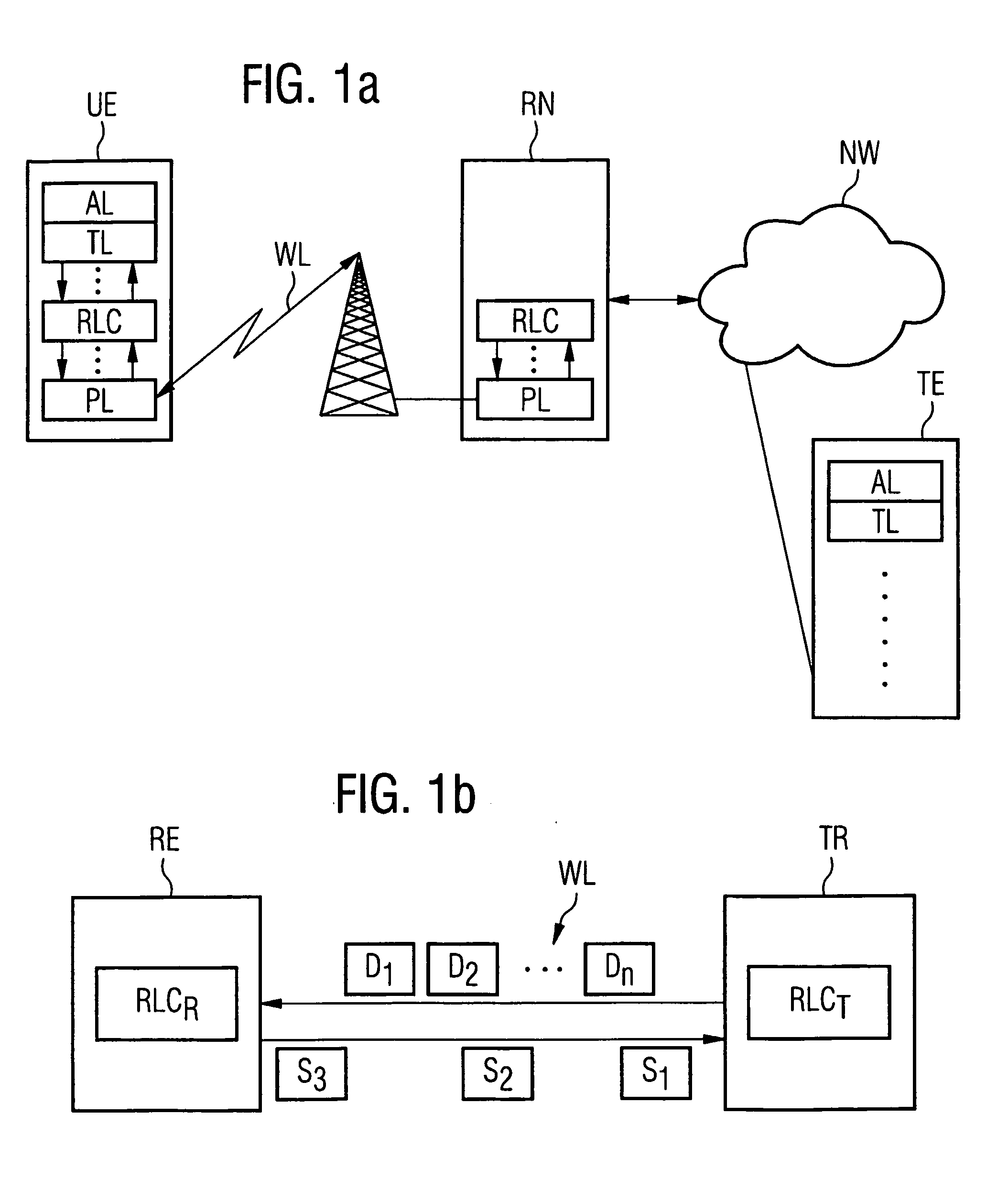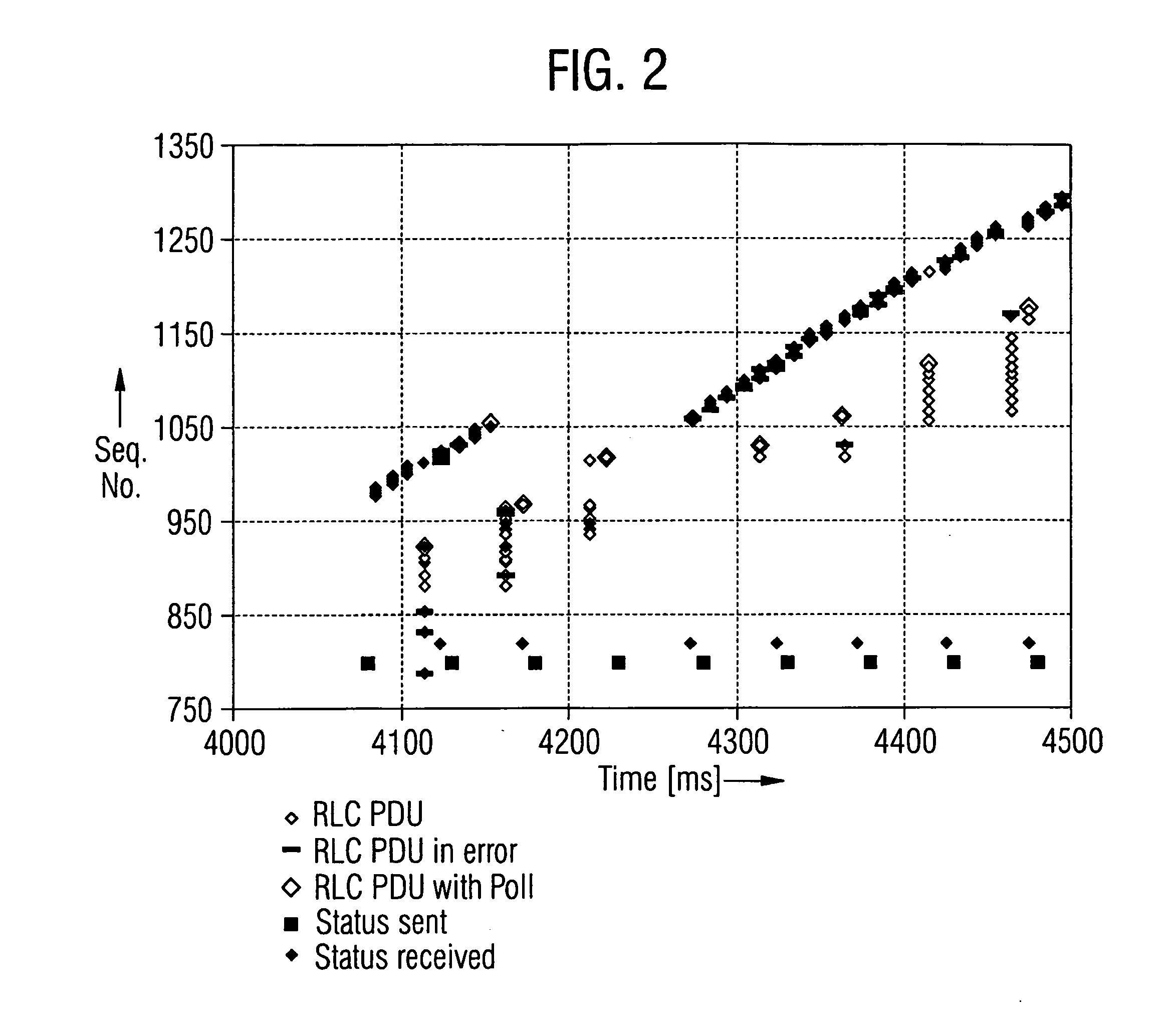Method and transmitter for an efficient packet data transfer in a transmission protocol with repeat requests
a transmission protocol and packet data technology, applied in data switching networks, frequency-division multiplexes, instruments, etc., can solve the problems of multiple retransmissions of the same pdu, waste of resources, and speed up the protocol, so as to avoid unnecessary multiple transmissions, improve the transmission speed, and improve the effect of data packet transmission
- Summary
- Abstract
- Description
- Claims
- Application Information
AI Technical Summary
Benefits of technology
Problems solved by technology
Method used
Image
Examples
Embodiment Construction
[0040] FIG. 1a illustrates a transmission system comprising a wireless link WL. The link WL connects a user equipment UE, for example a mobile phone or another terminal, and a radio network node RN, for example an RNC or a base station. Further equipment necessary for the connection is omitted for clarity, e.g. in case that the node RN is an RNC the wireless link extends between the user equipment UE and a radio base station which is in turn connected to the RNC. Both the user equipment UE and the node RN can be the transmitter or the receiver of the present invention, depending on the direction in which data packets are sent over the wireless link WL.
[0041] User equipment UE and network node RN comprise processing systems in which at least parts of a protocol stack for the transmission of data is implemented. The processing stack in the example comprises an application layer AL for executing applications, a transport layer TL, e.g. implementing TCP, a radio link control layer RLC a...
PUM
 Login to View More
Login to View More Abstract
Description
Claims
Application Information
 Login to View More
Login to View More - R&D
- Intellectual Property
- Life Sciences
- Materials
- Tech Scout
- Unparalleled Data Quality
- Higher Quality Content
- 60% Fewer Hallucinations
Browse by: Latest US Patents, China's latest patents, Technical Efficacy Thesaurus, Application Domain, Technology Topic, Popular Technical Reports.
© 2025 PatSnap. All rights reserved.Legal|Privacy policy|Modern Slavery Act Transparency Statement|Sitemap|About US| Contact US: help@patsnap.com



